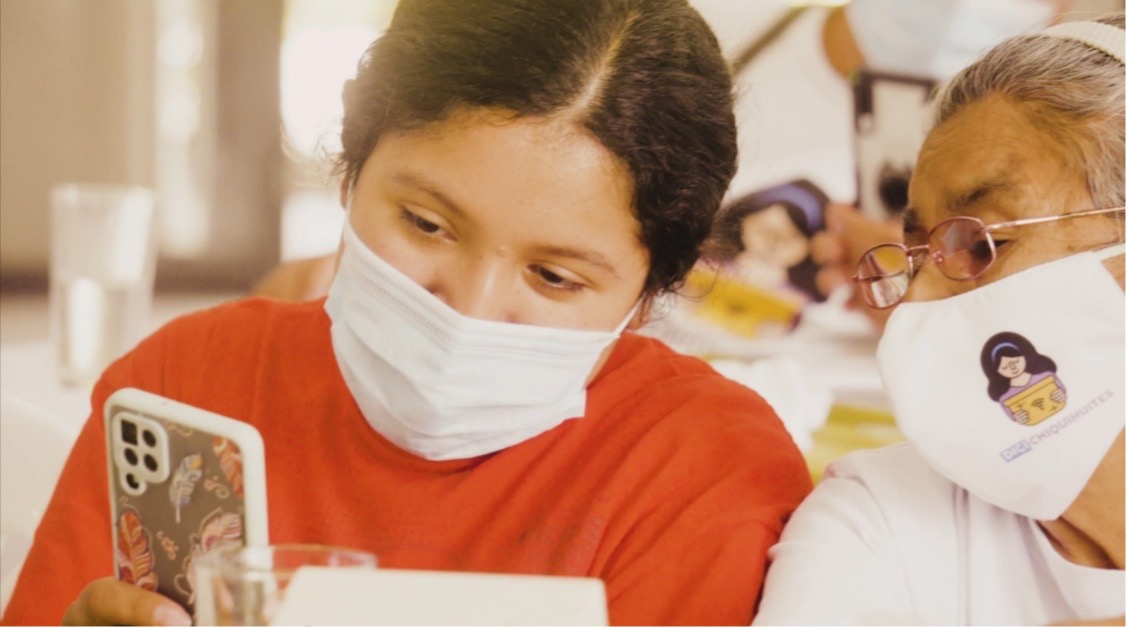Connecting with new capabilities: a basic digital basket (Part 1)
August 12, 2022
What is it like to be in 2022 without the skills and tools required to access digital citizen services? It is living deprived from job markets, commerce, education, information, and public services. It basically means, being left behind.
Among the many things the COVID-19 pandemic has taught us is that access and ability to use digital tools are important metrics of inclusion or exclusion. People's quality of life is determined by their ability to attain certain “beings” and “doings”. It is living not only free from material restrictions, but also encompasses a positive approach to freedom, in which individuals are not limited to reach their full potential. This is how it was argued by the Nobel Laureate in Economics, Amartya Sen, when developing the well-renowned capabilities approach, which is a cornerstone in the human development paradigm.
This is the first post from a series of blogs in which I describe the process of design and implementation of a portfolio of experiments in the UNDP Accelerator Lab in El Salvador, related to the inclusive digitalization challenge on the Digi-Chiquihuites Project and as part of the second learning cycle of our Lab.
The word “Chiquihuite” comes from the Nahuat, one of the languages used by the native populations of El Salvador and it means "basket". The project took the task of designing and delivering a basket of basic digital services for one of the sectors hit the hardest by the pandemic: entrepreneur women in the tourism sector. Based on baseline information, the first version of these baskets was designed with access, capabilities and enabler components in the form of mobile devices, access to a training program of digital skills and mobile internet connectivity, with the aim of safeguarding livelihoods and improving the financial inclusion of participants, mainly women.
The women at the center of Digi-Chiquihuites were excited to get involved in the project, its exchanges and trainings. However, a good number of them would try to access these benefits through an assistant designated by them.
In most cases, these assistants are younger relatives of the entrepreneurs, who participated in the training program in lieu of them and serve as a personal guide to facilitate access to digital products and services for personal and business uses.
This led to questions not only about the effectiveness of the digital baskets model and their components to generate positive attitudes, knowledge and trust about digital services in owners of micro and small enterprises, but also about the possibility that people could acquire the benefits of technology, even if they are not the ones manipulating them directly, but their assistants.

A young assistant accompanies a woman participating in Digi-Chiquihuites in her learning process about digital tools for businesses.
In addition, during the process three questions came up. If these aids were truly important to overcome the digital divide, would it be possible to emulate them through individuals outside the inner circle of family and friends? Could this be a potential public service that would help to reduce digital gaps, through the deployment of digital services promoters or fixed kiosks?
Finally, the distance learning component of Digi-Chiquihuites "Connecting with your Business" led us to inquire about the effectiveness of low cost and easy to scale virtual aid mechanisms for digital financial services. How effective would the aid be through online resources such as video tutorials on the process of building skills and trust in managing money online?
The previous questions shaped the experiments protocol that details the design, methods, subjects and procedure to test a total of 15 hypotheses on the effectiveness of different models of digital aids to generate positive attitudes, knowledge, skills and trust on digital tools and services among participants.
The methods used range from public service prototyping to natural experiments and randomized controlled trials (RCTs), similar to how new treatments are evaluated in the health sciences. In the following parts of this blog I will continue to explain the methods used and most important findings of the experiments undertaken around this learning cycle.

 Locations
Locations